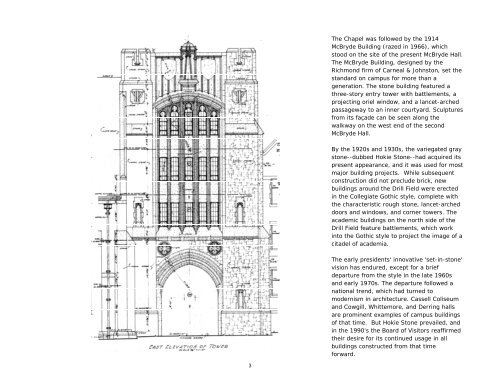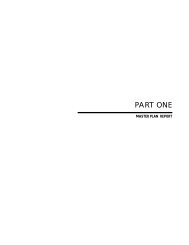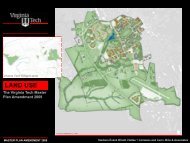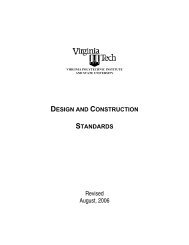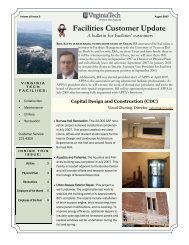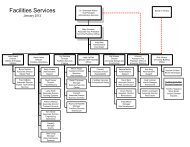Campus Design Principles - Facilities Services - Virginia Tech
Campus Design Principles - Facilities Services - Virginia Tech
Campus Design Principles - Facilities Services - Virginia Tech
You also want an ePaper? Increase the reach of your titles
YUMPU automatically turns print PDFs into web optimized ePapers that Google loves.
The Chapel was followed by the 1914<br />
McBryde Building (razed in 1966), which<br />
stood on the site of the present McBryde Hall.<br />
The McBryde Building, designed by the<br />
Richmond firm of Carneal & Johnston, set the<br />
standard on campus for more than a<br />
generation. The stone building featured a<br />
three-story entry tower with battlements, a<br />
projecting oriel window, and a lancet-arched<br />
passageway to an inner courtyard. Sculptures<br />
from its façade can be seen along the<br />
walkway on the west end of the second<br />
McBryde Hall.<br />
By the 1920s and 1930s, the variegated gray<br />
stone--dubbed Hokie Stone--had acquired its<br />
present appearance, and it was used for most<br />
major building projects. While subsequent<br />
construction did not preclude brick, new<br />
buildings around the Drill Field were erected<br />
in the Collegiate Gothic style, complete with<br />
the characteristic rough stone, lancet-arched<br />
doors and windows, and corner towers. The<br />
academic buildings on the north side of the<br />
Drill Field feature battlements, which work<br />
into the Gothic style to project the image of a<br />
citadel of academia.<br />
The early presidents' innovative 'set-in-stone'<br />
vision has endured, except for a brief<br />
departure from the style in the late 1960s<br />
and early 1970s. The departure followed a<br />
national trend, which had turned to<br />
modernism in architecture. Cassell Coliseum<br />
and Cowgill, Whittemore, and Derring halls<br />
are prominent examples of campus buildings<br />
of that time. But Hokie Stone prevailed, and<br />
in the 1990’s the Board of Visitors reaffirmed<br />
their desire for its continued usage in all<br />
buildings constructed from that time<br />
forward.<br />
3


